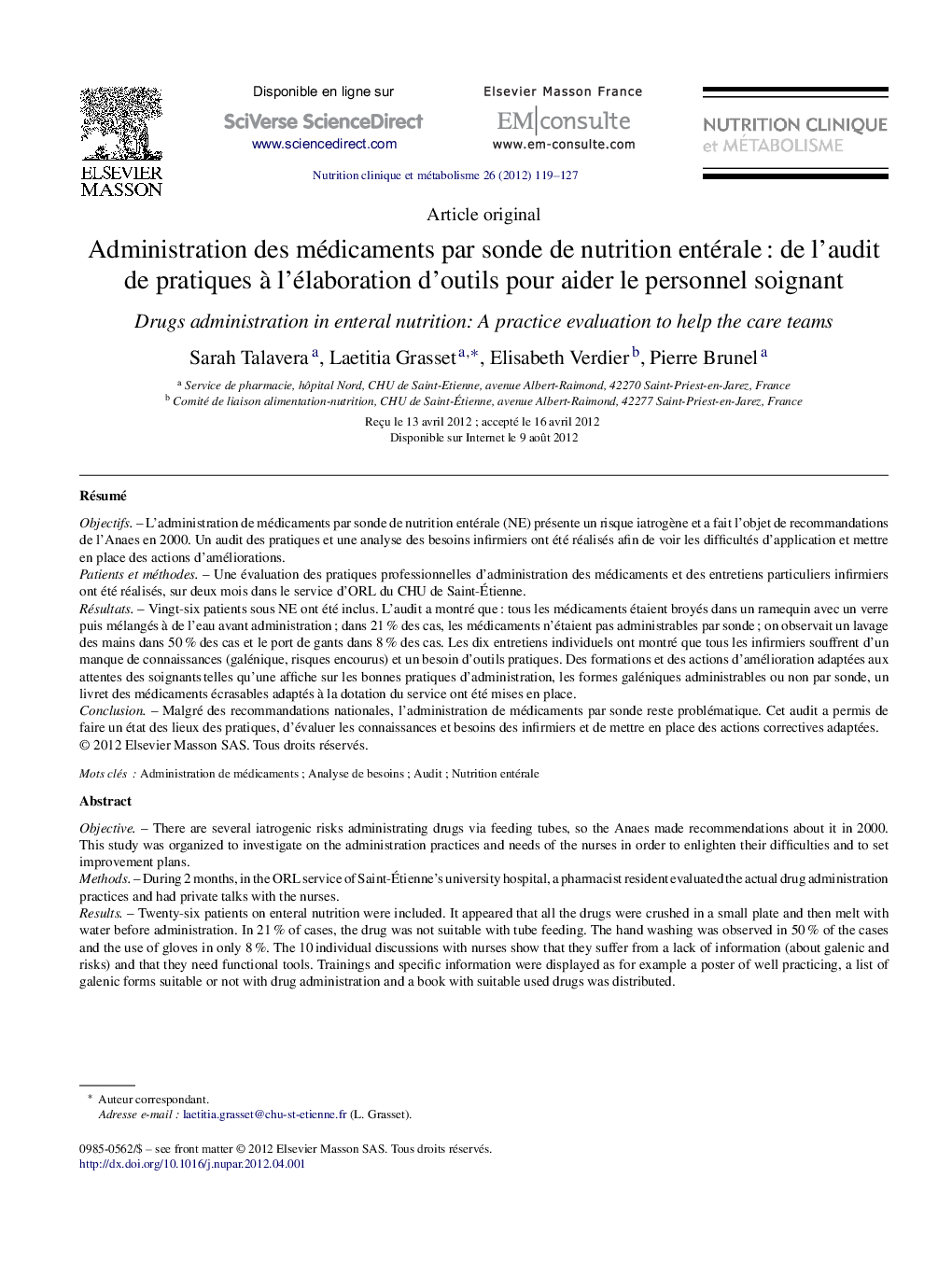| Article ID | Journal | Published Year | Pages | File Type |
|---|---|---|---|---|
| 2692060 | Nutrition Clinique et Métabolisme | 2012 | 9 Pages |
RésuméObjectifsL’administration de médicaments par sonde de nutrition entérale (NE) présente un risque iatrogène et a fait l’objet de recommandations de l’Anaes en 2000. Un audit des pratiques et une analyse des besoins infirmiers ont été réalisés afin de voir les difficultés d’application et mettre en place des actions d’améliorations.Patients et méthodesUne évaluation des pratiques professionnelles d’administration des médicaments et des entretiens particuliers infirmiers ont été réalisés, sur deux mois dans le service d’ORL du CHU de Saint-Étienne.RésultatsVingt-six patients sous NE ont été inclus. L’audit a montré que : tous les médicaments étaient broyés dans un ramequin avec un verre puis mélangés à de l’eau avant administration ; dans 21 % des cas, les médicaments n’étaient pas administrables par sonde ; on observait un lavage des mains dans 50 % des cas et le port de gants dans 8 % des cas. Les dix entretiens individuels ont montré que tous les infirmiers souffrent d’un manque de connaissances (galénique, risques encourus) et un besoin d’outils pratiques. Des formations et des actions d’amélioration adaptées aux attentes des soignants telles qu’une affiche sur les bonnes pratiques d’administration, les formes galéniques administrables ou non par sonde, un livret des médicaments écrasables adaptés à la dotation du service ont été mises en place.ConclusionMalgré des recommandations nationales, l’administration de médicaments par sonde reste problématique. Cet audit a permis de faire un état des lieux des pratiques, d’évaluer les connaissances et besoins des infirmiers et de mettre en place des actions correctives adaptées.
ObjectiveThere are several iatrogenic risks administrating drugs via feeding tubes, so the Anaes made recommendations about it in 2000. This study was organized to investigate on the administration practices and needs of the nurses in order to enlighten their difficulties and to set improvement plans.MethodsDuring 2 months, in the ORL service of Saint-Étienne's university hospital, a pharmacist resident evaluated the actual drug administration practices and had private talks with the nurses.ResultsTwenty-six patients on enteral nutrition were included. It appeared that all the drugs were crushed in a small plate and then melt with water before administration. In 21 % of cases, the drug was not suitable with tube feeding. The hand washing was observed in 50 % of the cases and the use of gloves in only 8 %. The 10 individual discussions with nurses show that they suffer from a lack of information (about galenic and risks) and that they need functional tools. Trainings and specific information were displayed as for example a poster of well practicing, a list of galenic forms suitable or not with drug administration and a book with suitable used drugs was distributed.ConclusionDespite of national advices, drug administration via feeding tube remains a source of problems. Thanks to this study, we now know what is done today, and the needs of the care teams; corrective actions can be established.
